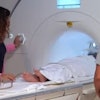It's important for patients with hip fractures to undergo surgery as quickly as possible. But ER overcrowding -- a worldwide problem -- can slow down how long it takes patients to receive imaging. While this issue has been studied extensively for conditions such as stroke and myocardial infarction, its impact on trauma cases has received less attention, according to presenter Dr. Brendan Kelly of St. Vincent's University Hospital in Galway.
"Hip fractures are a time-dependent pathology where outcomes improve with rapid diagnosis and treatment. They often affect the most vulnerable of patients," Kelly told AuntMinnie.com. "Emergency department overcrowding is a well-established problem with the potential to delay treatment and diagnosis and impact patient outcome."
The researchers wanted to assess whether ER overcrowding was causing a delay in patient time to radiography (TTR) at their institution. They investigated a database of patients with hip fractures seen at their tertiary-referral urban hospital, focusing on 154 consecutive cases. The mean age of the patients was 81 years; 115 were female and 39 were male.
The mean time to radiography for the patients was 110 minutes. Perhaps not surprisingly, the researchers found a correlation between the number of patients being seen in the ER and the time to radiography: When the ER was above its capacity of 33 patients, the time to radiography was 113 minutes. When it was below this threshold, the time was only 61 minutes.
The institution implemented a target of one hour to radiography for hip fracture patients; this coincided with a reduction in the average time to ward or operating theater from 11 to five hours over the space of six months, Kelly told AuntMinnie.com.
Further analysis of patient outcomes found that while time to radiography was not associated with a delay in time to surgery, it was associated with time to ward and length of stay.
"Awareness of how a crowded ED worsens outcomes and delays diagnosis should prompt emergency physicians, surgeons, and radiology staff to action in assuring timely interventions for these vulnerable patients," Kelly said. "Resources should be adequately administered during times of overcrowding to alleviate the risk of poorer outcomes in patients with hip fractures."


















